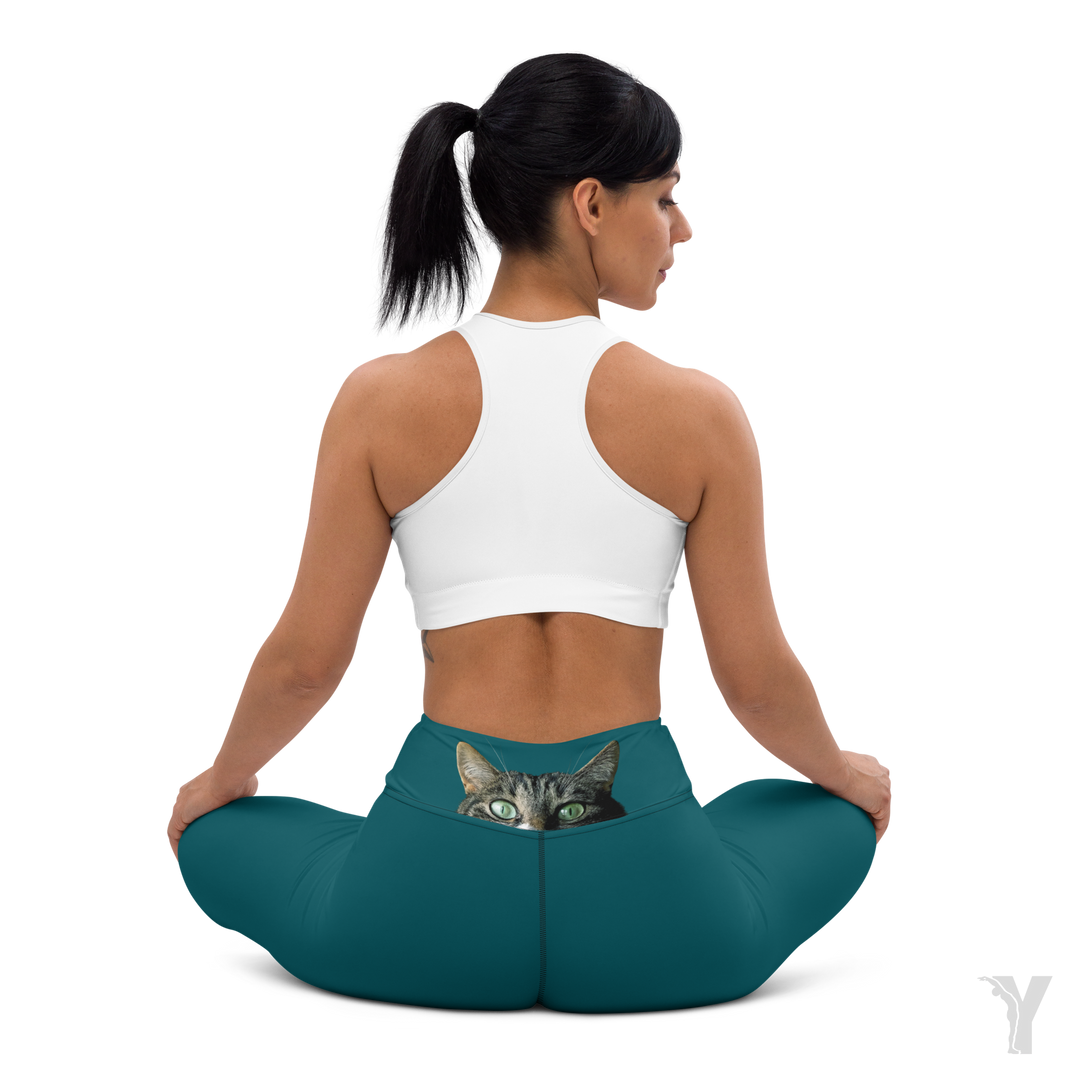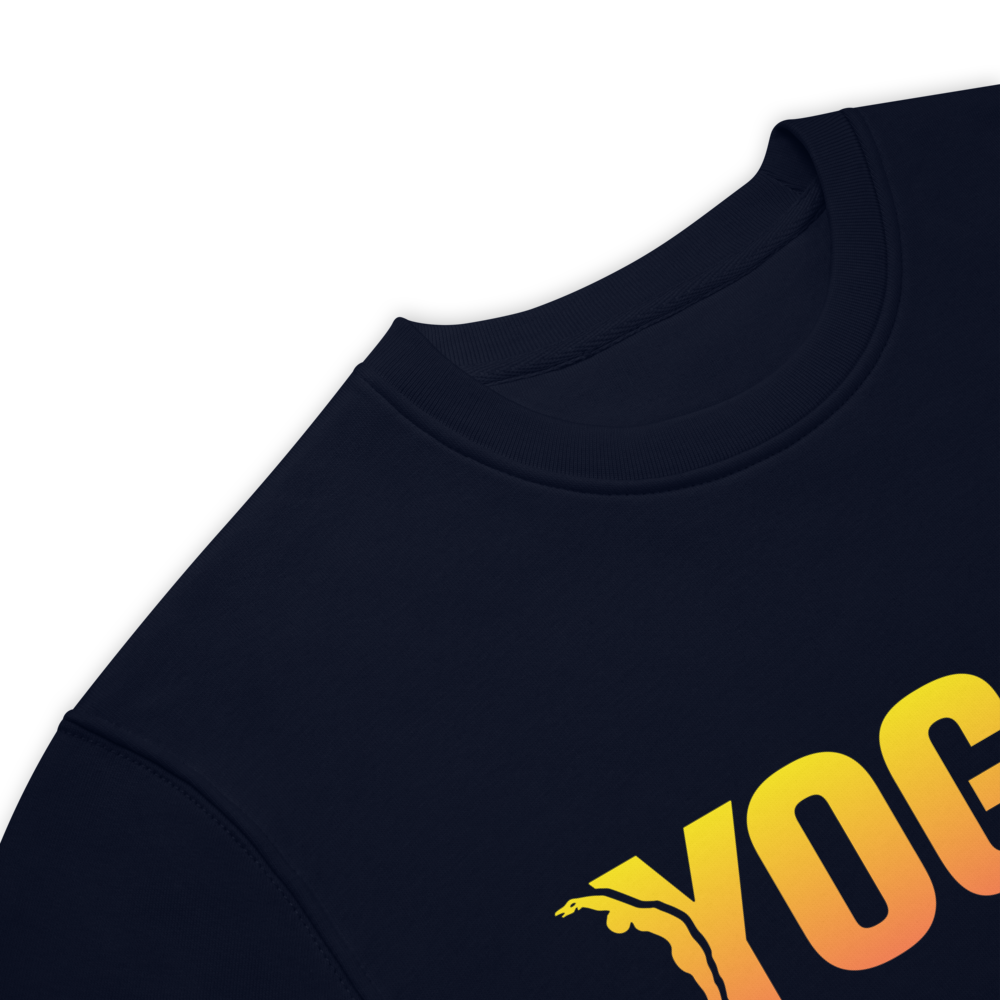When and why to start prenatal yoga?

Pregnancy is an extraordinary time in a woman's life, marked by many physical and emotional changes . During this phase, it is essential to maintain adequate physical activity and find ways to relax and connect with your body and your future baby. Prenatal yoga is a perfect practice to meet these needs.
This article will guide you through the multiple benefits of prenatal yoga, the recommended postures, the precautions to take and how to integrate this discipline into your daily routine for a serene and harmonious pregnancy.
What is prenatal yoga?
Prenatal yoga is a specific form of yoga designed for pregnant women. Unlike traditional yoga, it focuses on postures and breathing techniques that are safe and beneficial for expectant mothers . Prenatal yoga is an adaptation of traditional postures to meet the specific needs of women during the different stages of their pregnancy.
Historically, yoga has its roots in India, over 5,000 years ago. Prenatal yoga , while a modern practice, draws on these ancient techniques to offer a gentle and mindful approach to physical and mental exercise. Prenatal yoga sessions often include elements of meditation and relaxation, in addition to physical exercise, to help women prepare for childbirth and motherhood.
The benefits of prenatal yoga
Prenatal yoga offers many benefits for the physical and mental health of expectant mothers. Here are some of the main benefits of this practice:
Improved flexibility and muscle strength
During pregnancy, the body goes through many changes, especially in posture and balance. Prenatal yoga helps maintain and improve flexibility in muscles and joints, especially in the pelvis, hips and lower back areas. The specific postures also strengthen the muscles needed to support the baby's increasing weight and prepare the body for childbirth.
Reduction of pregnancy-related pain
Lower back pain, pelvic pain, and muscle cramps are common discomforts during pregnancy. Prenatal yoga exercises are designed to relieve these discomforts by stretching and strengthening the affected muscles. For example, postures that open the hips and stretch the back can greatly relieve back pain.
Improved breathing and blood circulation
Breathing is a key component of prenatal yoga. The deep breathing techniques taught in yoga classes help increase oxygen intake, which is beneficial for both mother and baby. Additionally, improved blood circulation can reduce swelling and heavy leg sensations, which are common during pregnancy.
Reduced stress and anxiety
Pregnancy can be a stressful time, filled with many worries and hormonal changes. Prenatal yoga incorporates meditation and relaxation practices that help calm the mind and reduce anxiety. These relaxation techniques can also be very helpful during labor and delivery.
Strengthening the bond with the baby
Prenatal yoga offers a unique opportunity to connect with your baby. Yoga sessions encourage expectant mothers to focus on their bodies and listen to their baby's movements. This enhanced connection can improve the mother's emotional well-being and foster a sense of connection with her unborn child.
Recommended postures in prenatal yoga
Prenatal yoga offers many poses that are suitable for different stages of pregnancy. Here are some of the most commonly recommended poses and their benefits:
Cat and Cow Pose (Marjaryasana and Bitilasana)
These postures are great for loosening up the spine and relieving tension in the back. To perform these postures, start on all fours, aligning your wrists under your shoulders and your knees under your hips. As you inhale, gently arch your back (cow pose) and as you exhale, round your back like a cat. Repeat these movements several times, synchronizing with your breathing.
Butterfly Pose (Baddha Konasana)
Butterfly pose is great for opening the hips and stretching the inner thighs. Sit with your back straight and bring the soles of your feet together, knees bent and falling to the sides. Grasp your feet with your hands and gently pull them towards you while pushing your knees towards the floor. Hold the pose while breathing deeply.
Child's pose (Balasana)
This pose provides a gentle stretch for your back and hips while promoting relaxation. Kneel down, sit back on your heels, and then lean forward with your arms extended in front of you or at your sides. Let your forehead rest on the floor and breathe deeply. This pose can be especially calming after a tiring day.
Adaptations and modifications according to the trimester of pregnancy
It is important to adapt yoga postures according to the trimester of pregnancy to ensure safety and comfort. Here are some recommendations for each trimester:
First quarter
- Focus on gentle postures and avoid inverted positions.
- Listen to your body and rest if you feel tired or nauseous.
- Practice deep breathing techniques to improve blood circulation and reduce stress.
Second quarter
- Take advantage of the newfound energy to practice postures that strengthen the muscles of the back and legs.
- Use props like cushions and blocks to support postures.
- Avoid postures that involve lying on your back for a prolonged period of time.
Third quarter
- Focus on postures that open the hips and prepare the body for childbirth.
- Practice breathing and relaxation exercises to reduce anxiety.
- Avoid postures that put too much pressure on the stomach and use supports for sitting and lying postures.
Precautions and contraindications with prenatal yoga
Although prenatal yoga is generally safe, it is essential to take certain precautions to avoid complications. Here are some tips for practicing prenatal yoga safely:
- Always consult a healthcare professional before starting a new exercise routine. Every pregnancy is unique, and it is important to get personalized advice.
- Practice with a teacher who really masters prenatal yoga . It happens that some teachers improvise as prenatal teachers without a diploma, so be careful when you go to a class.
- Avoid postures that compress the abdomen or put excessive pressure on the belly. Prefer gentle and controlled movements. (a qualified teacher will be able to give good advice)
- Hydrate yourself well and take regular breaks to rest if necessary.
- Listen to your body and never force a posture if you feel pain or discomfort.
- Practice in a safe and comfortable environment , ideally under the supervision of a qualified prenatal yoga instructor.
Integrating prenatal yoga into your daily routine
Prenatal yoga can be flexibly integrated into your daily routine, whether you are at home or prefer to attend classes in person. Here are some tips to help you get started:
Find a suitable course
Looking for specialized prenatal yoga classes is a great way to make sure the exercises are tailored to your needs. You can find classes online or in-person. Online classes offer the flexibility to practice at your own pace, while in-person classes allow for direct interaction with the instructor and other moms-to-be.
In any case, make sure that the teacher has the skills and qualifications to teach prenatal yoga.
You can find the interview with Pablo , a prenatal yoga teacher, who talks to us about this discipline during an episode of Yoga quoiqu'il en coût .


















